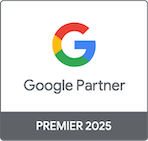They occur when the ads land on irrelevant, low-quality, or unsafe sites within the Google Display Network, therefore wasting ad spend and risking brand safety.
Top 5 Google display placement issues draining your ad performance (and how to fix them)
Abisola Tanzako | Nov 11, 2025

Table of Contents
- Common traps in Google display placement issues
- Extensive network and level of control:
- Overreliance on automation:
- Lack of transparency:
- Missing exclusion lists:
- Accidental clicks in mobile apps:
- Performance measures with false values:
- Brand safety risks:
- Top 5 Google display placement issues undermining campaign performance
- Ads appearing on irrelevant or low-quality websites
- Ads showing on Made-for-Advertising (MFA) websites
- Ads appearing on non-brand-safe or controversial content
- Ads running on mobile apps and games with accidental clicks
- Lack of placement transparency and control
- Why do Google display placement issues persist?
- How ClickPatrol fixes recurring Google display placement issues
- Take back control: Prevent future Google display placement issues
Google Display Ads help marketers reach customers across millions of websites, apps, and videos on the Google Display Network (GDN). It is a good way to build awareness and drive conversions beyond search results.
However, not all placements are equal. Many advertisers discover their ads running on low-quality, irrelevant, or even harmful sites, wasting budget, hurting brand reputation, and distorting campaign performance.
ClickPatrol has identified these recurring Google display placement issues across industries. In this article, we will break down the top five challenges, their impact on your campaigns, and how ClickPatrol automatically helps eliminate them.
Common traps in Google display placement issues
Here are some of the most common traps advertisers fall into when running campaigns on the Google Display Network (GDN), often leading to wasted spend, skewed data, and brand safety risks.
Extensive network and level of control:
The GDN has about 35 million websites and apps in its network; therefore, a human cannot monitor every single placement.
Overreliance on automation:
Advertisers seem to trust automated targeting and Smart Bidding from Google, suggesting a preference for impressions and clicks over relevance and quality.
Lack of transparency:
Many placements are hidden under vague categories such as “anonymous apps” or “video partners,” leaving marketers unsure where their ads actually appear.
Missing exclusion lists:
The inability to regularly refresh them means a campaign risks encountering made-for-advertising, irrelevant content, and fake traffic.
Accidental clicks in mobile apps:
Mobile games and utilities often feature ads that are easily clicked by accident, especially by kids, boosting CTRs but resulting in no conversions.
Performance measures with false values:
Bots or accidental clicks can manipulate data, leading automated systems to optimize for poor placements.
Brand safety risks:
Ads placed alongside contentious, offensive, or unsafe content can erode consumer confidence and damage brand reputation.
Top 5 Google display placement issues undermining campaign performance
These are the top five Google Display placement issues that silently drain ad budgets, distort performance data, and put brand reputation at risk.
Ads appearing on irrelevant or low-quality websites
The most common Google display placement issue is likely ads appearing on poor-quality or unrelated websites.
Google’s algorithms are designed to match your ads with people who are likely to be interested, based on targeting options like keywords, topics, or interests, though they are hardly infallible.
For example, if you are advertising a premium SaaS solution for businesses, your ads might still appear on meme sites, gossip blogs, or unrelated mobile games.
These placements often attract accidental clicks or low-intent traffic, which drives up costs without yielding meaningful results.
Even worse, some of these sites exist purely to generate ad revenue through clickbait content or fraudulent activity.
The impact
- Wasted ad spend on unqualified audiences
- Distorted performance metrics: CTR could look fantastic, but the conversion rates are poor.
- Brand safety risks: ads appearing alongside offending or amateurish content
Ads showing on Made-for-Advertising (MFA) websites
Made-for-Advertising (MFA) pages serve no purpose other than to show ad impressions and clicks, providing users with no value whatsoever.
They tend to have bad content with obtrusive ad placement. Technically part of the Display Network, MFA pages blow budgets and deliver virtually zero ROI.
The impact
- High impressions, low engagement ads looked at but not interacted with
- Inflated costs with no actual conversions
- Poor campaign performance due to poor-quality traffic skewing optimisation signals.
Ads appearing on non-brand-safe or controversial content
Brand safety is the most feared issue in display advertising. One offending ad run alongside hateful, violent, or misleading content from another site can damage a brand’s reputation.
Unfortunately, because of the reach of the GDN and consumer-generated sites like YouTube, advertisers more often than not have their ads appear alongside extremist videos, disinformation, or inflammatory political content.
The impact
- Severe brand reputation damage when photos of inappropriate ad placements spread widely online
- Loss of consumer trust and negative publicity
- Internal backlash as marketing teams scramble to apologize for the issue
Ads running on mobile apps and games with accidental clicks
In-app placements, particularly in games and utilities, are an ongoing issue. People, especially kids, often click on ads accidentally when they’re trying to get rid of them or advance in a game.
These zero-intent clicks artificially inflate your click-through rates but deliver no engagement or conversions.
The impact
- Spent the budget on zero-intent clicks.
- Distorted analytics make it more difficult to track performance
- Lower overall ROI, especially on automated bidding strategies
Lack of placement transparency and control
The most significant frustration for advertisers is the lack of complete transparency in Google Display placements.
Even with placement reports, not all is revealed about site URLs or YouTube channels. Some appear as anonymous categories, such as “mobile app” or “video partner.”
The impact
- Limited accountability, you cannot optimize what you cannot see
- Trouble spotting waste or bad placements
- More dependence on automation, which may not always have your best interests at heart
Why do Google display placement issues persist?
Despite all these years of technological development in ad technology, these Google placement issues persist because of three underlying facts:
- Automation bias: Publishers are relying heavily on Google’s machine learning and auto-targeting. Easy as it is to say, automation does not always mean quality or context.
- Scale vs. quality trade-off: The size of the Display Network is both its greatest strength and worst weakness. Millions of sites equal unparalleled reach but also unparalleled risk.
- Reactive oversight: Most advertisers only discover poor placements after the fact, not beforehand. ClickPatrol was designed to correct these flaws. Instead of reacting to poor placements after a campaign has already burned through spend, the platform proactively monitors and blocks placements in real-time so your ads only show where they should.
How ClickPatrol fixes recurring Google display placement issues
ClickPatrol is a shield that creates a safe distance between your advertisements and the Display Network, ensuring placements align with your performance, audience, and brand. Key features include:
- Constant checking: ClickPatrol monitors all your active placements and automatically identifies websites that are bad, outdated, or unsafe.
- Real-time exclusions: Once a bad placement is detected, it is removed instantly, preventing wasted impressions or clicks.
- Data transparency: The system includes detailed reports that show which placements were blocked and the reasons for each.
- User-adjustable rules: Advertisers can set their own parameters for what constitutes low-quality or irrelevant content, tailoring the system to their unique brand standards.
- Protection of your brand: ClickPatrol will safeguard your brand image, as you will never see your ads appear alongside inappropriate or scandalous content.
Take back control: Prevent future Google display placement issues
Google Display Ads will only deliver true ROI when placed in high-quality, relevant environments.
However, recurring issues with irrelevant websites, MFA pages, unsafe content, and unintentional clicks continue to drain ad budgets and damage brand trust.
Clickpatrol will enable advertisers to recapture control by automatically identifying and preventing bad placements in real time. The outcome: healthier data, cleaner ads, and improved campaign performance.
Stop wasting money on poor placements and unsafe sites. ClickPatrol automatically detects and removes bad Google Display placements in real time, protecting your brand and maximizing ROI.
Try ClickPatrol today to clean up your campaigns and restore ad performance.
Frequently Asked Questions
-
What are Google Display placement problems?
-
Why do my ads appear on bad sites?
Poor contextual judgment by Google’s automation leads to erroneous ad placements.
-
What are MFA sites?
Made-for-Advertising sites exist solely to generate ad revenue, offering zero user value and zero ROI.
-
How can I avoid poor placements?
Use manual exclusions or ClickPatrol for real-time, automatic protection.






